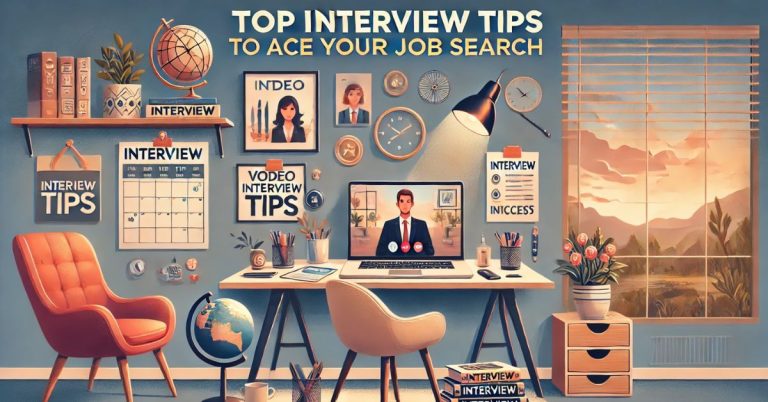In today’s competitive job market, crafting a standout resume is essential to catching the eye of potential employers. This article guides you through the process, ensuring your resume showcases your skills and sets you apart.
We’ll cover everything from the basic structure to the finer details of personal branding. By the end, you’ll have all the tools to create a resume that resonates in any industry.
Understanding the Basics of a Resume
Knowing the basics of a resume is crucial. It helps you present yourself effectively to employers.
What a Resume Is and Its Purpose?
A resume is a document that outlines your professional history and qualifications. Its primary purpose is to showcase your skills and experiences to potential employers.
It helps employers quickly gauge if you are a good fit for the position. Presenting your work history increases your chances of landing an interview.
Difference Between a Resume and a CV
A resume is typically shorter and focuses on your relevant experience and skills. It’s used mainly in the United States for most job applications. A CV, or Curriculum Vitae, is more detailed and is often used for academic, research, and international positions.
It includes comprehensive information about your educational background, publications, and other achievements. Resumes are usually one to two pages, while CVs can be much longer. Knowing the difference ensures you submit the correct document for your job search.
Tailoring Your Resume for the Job Market
Customizing your application is key to standing out. Tailoring it shows employers you’re the right match for their needs.
Importance of Customizing Your Resume for Each Application
Each job application is unique, and your submission should reflect that. Customizing your document helps highlight the skills and experiences most relevant to the position.
This increases your chances of getting noticed by hiring managers. Personalizing your approach shows you’re genuinely interested in the specific role.
How to Analyze Job Descriptions for Keywords and Skills to Include?
Analyzing job descriptions is essential to match your application to the employer’s needs. Look for:
- Key phrases and terms are frequently mentioned.
- Required skills and qualifications are listed in the job posting.
- Specific job responsibilities that align with your experiences.
- Any industry-specific keywords that stand out.
Building the Layout
Choosing the proper structure is vital for clarity and impact. It helps your application stand out and be easily read.
Overview of Common Resume Formats
The chronological format lists your work history in reverse order, first showing your most recent job. It’s ideal if you have a solid work history without significant gaps.
The functional format emphasizes skills and experiences over a timeline, which is helpful if you’re changing careers or have gaps. The combination format merges elements of both, highlighting abilities while providing a chronological work history.
This format suits those with a varied background. Selecting the proper format ensures your strengths are showcased effectively.
Guide on Choosing the Right Format-Based
If you have steady, relevant job experience, follow the chronological format. It clearly shows your career progression. The functional format is better for those with varied experiences or gaps. It emphasizes what you can do rather than when you did it.
The combination format well highlights skills and a stable job history. Consider the job you’re applying for and choose a layout that best fits its requirements. Tailoring the structure to your background and the job type enhances your chances.
Essential Components of a Resume
A well-structured application has several critical sections. Each part needs to be crafted carefully to make a strong impression.
Detail Each Section
Let’s break down each section to understand what it should include. This will help you present yourself effectively to potential employers.
- Contact Information: Include your name, phone number, email, and LinkedIn profile.
- Objective/Summary: Brief statement about your career goals or a summary of your qualifications.
- Work Experience: List your jobs, focusing on achievements and responsibilities.
- Education: Mention your degrees, institutions, and graduation dates.
- Skills: Highlight relevant technical and soft skills.
- Certifications: Include any professional certifications or licenses.
Tips on How to Make Each Section Impactful
Focusing on these elements can help you craft an application that effectively highlights your qualifications and catches the attention of employers.
- Contact Information: Ensure it’s up-to-date and professional.
- Objective/Summary: Keep it concise and relevant to the job.
- Work Experience: Use action verbs and quantify achievements.
- Education: Include honors or relevant coursework if applicable.
- Skills: Tailor to the job description, listing your most relevant abilities.
- Certifications: Place prominent, industry-recognized certifications at the top.
Showcasing Your Accomplishments and Abilities
Your achievements and skills are central to making a solid impression. Highlighting them effectively can set you apart from other candidates.
How to Quantify Achievements?
Understanding how to present your accomplishments is key:
- Use specific numbers to quantify results (e.g., increased sales by 20%).
- Describe the scope of projects (e.g., managed a team of 10).
- Highlight awards or recognitions you’ve received.
- Cite improvements or efficiencies you implemented.
- Show progression or promotions within a company.
- Include testimonials or endorsements if applicable.
Importance of Soft Skills and How to Incorporate Them
Soft skills are crucial for workplace success:
- Identify which soft skills are most valued in your industry (e.g., teamwork, communication).
- Provide examples of how you’ve applied these skills (e.g., resolved a conflict).
- Mention any training or workshops you’ve attended.
- Include soft skills in your summary or objective.
- Use recommendations to validate your interpersonal abilities.
- Align soft skills with job description requirements.
Design and Aesthetics
The visual presentation of your job application can significantly impact readability and perception. Striking the right balance between professionalism and creativity is essential.
Discuss the Balance Between Professionalism and Creativity
Creating a visually appealing document involves understanding its context:
- Maintain a professional look while adding a touch of creativity to stand out.
- Use design elements sparingly to enhance, not overwhelm, the content.
- Consider the industry when deciding how creative to get.
- A well-designed layout can make information easier to digest and more engaging.
Recommended Layout Tips to Enhance Readability
Choosing the right fonts and layout is crucial for clarity:
- Stick to professional fonts like Arial, Calibri, or Times New Roman.
- Use a font size between 10 and 12 for body text and 14 to 16 for headings.
- Ensure adequate spacing; 1.15 to 1.5 line spacing is typically effective.
- Use bullet points and bold headings to organize sections.
Using Technology to Your Advantage
Technology offers powerful tools that can enhance the professionalism of your job application. Using the right software and platforms can make a significant difference.
Tools and Software That Can Help in Creating a Professional-Looking Resume
Several digital tools can enhance your job application:
- Word processors like Microsoft Word or Google Docs offer extensive formatting options.
- Design software such as Adobe InDesign can be used for more creative industries.
- Resume-building websites provide templates and tips for structuring content.
- Grammar and style checkers like Grammarly ensure your text is clear and error-free.
Importance of LinkedIn and Integrating Your Online Professional Profile
Your online presence can complement your job application:
- LinkedIn allows you to expand on your job application, showing endorsements and a broader work history.
- Regular updates and engagement show recruiters you are active and connected.
- You can share articles or projects that reflect your professional interests and expertise.
- Integrating your LinkedIn profile link into your job application encourages employers to explore your professional background more.
Pitfalls in Application Creation
Avoiding common mistakes is essential for crafting an effective application. Here are some pitfalls to steer clear of:
- Typos and grammatical errors: These undermine your professionalism.
- Excessive verbosity: Too much text can dilute the impact of your key points.
- Irrelevant information: Stick to details that add value to your application.
- Inconsistent formatting: Maintain uniformity in fonts, sizes, and spacing.
- Outdated information: Ensure all details are current and relevant.
Advice on Proofreading and Getting Feedback
Thorough proofreading and seeking feedback are crucial steps in refining your application. Here’s how to approach them:
- Use spell-check and grammar tools: Take advantage of technology to find errors.
- Read aloud: This can help catch mistakes that your eyes might skip.
- Ask for peer reviews: Feedback from others can provide new perspectives.
- Hire a professional editor, If possible, for a polished look.
- Take breaks before reviewing: Fresh eyes can spot more errors.
Concluding Thoughts: Building Your Standout Application
Creating a standout resume is pivotal in navigating any job market. It requires attention to detail, relevance, and clarity.
This article has armed you with the tools to enhance your presentation and avoid typical errors. Employ these strategies to improve your chances of making a lasting impression on potential employers.
Read in another language
- Español: Cómo crear un currículum destacado para cualquier mercado laboral
- Bahasa Indonesia: Bagaimana Cara Membuat Resume yang Menonjol untuk Pasar Kerja Apapun
- Bahasa Melayu: Bagaimana Mencipta Resume Menonjol untuk Pasaran Pekerjaan Mana Pun
- Čeština: Jak vytvořit výrazný životopis pro libovolný trh práce
- Dansk: Sådan skaber du en fremragende ansøgning til ethvert jobmarked
- Deutsch: Wie man einen herausragenden Lebenslauf für jeden Arbeitsmarkt erstellt
- Eesti: Kuidas luua silmapaistvat CV-d igale tööturule
- Français: Comment créer un CV qui se démarque dans n’importe quel marché de l’emploi
- Hrvatski: Kako napraviti istaknuti životopis za bilo koje tržište rada
- Italiano: Come creare un curriculum che si distingua su qualsiasi mercato del lavoro
- Latviešu: Kā izveidot ievērojamu CV jebkuram darba tirgum
- Lietuvių: Kaip sukurti įspūdingą gyvenimo aprašymą bet kuriam darbo rinkai
- Magyar: Hogyan készíts kiemelkedő önéletrajzot bármilyen álláspiacon
- Nederlands: Hoe je een opvallend cv maakt voor elke arbeidsmarkt
- Norsk: Hvordan lage en fremragende CV for ethvert jobbmarked
- Polski: Jak stworzyć wyjątkowe CV dla dowolnego rynku pracy
- Português: Como Criar um Currículo Destacado para Qualquer Mercado de Trabalho
- Română: Cum să creezi un CV de excepție pentru orice piață a locurilor de muncă
- Slovenčina: Ako vytvoriť výnimočný životopis pre akýkoľvek trh práce
- Suomi: Miten luoda erottuva ansioluettelo mille tahansa työmarkkinoille
- Svenska: Hur du skapar ett enastående CV för vilken jobbmarknad som helst
- Tiếng Việt: Cách tạo một bản sơ yếu lý lịch nổi bật cho bất kỳ thị trường việc làm nào
- Türkçe: Herhangi Bir İş Piyasası İçin Dikkat Çeken Bir CV Nasıl Oluşturulur
- Ελληνικά: Πώς να δημιουργήσετε ένα εντυπωσιακό βιογραφικό για οποιαδήποτε αγορά εργασίας
- български: Как да създадем впечатляващо автобиографично писмо за всякакъв пазар на труда
- Русский: Как создать выдающееся резюме для любого рынка труда
- עברית: איך ליצור קורות חיים מצטיינים לכל שוק עבודה
- اردو: کسی بھی ملازمتی مارکیٹ کے لیے ایک بے مثال ریزیوم تخلیق کرنے کا طریقہ
- العربية: كيفية إنشاء سيرة ذاتية متميزة لأي سوق عمل
- فارسی: چگونه یک رزومه برجسته برای هر بازار کاری ایجاد کنیم
- हिन्दी: किसी भी नौकरी बाजार के लिए एक बेहतरीन रिज्यूमे कैसे बनाएं
- ภาษาไทย: วิธีสร้างเรซูเม่ที่โดดเด่นสำหรับทุกตลาดงาน
- 日本語: どの求人市場にも異彩を放つ履歴書を作成する方法
- 简体中文: 如何在任何就业市场中创建出色的简历
- 繁體中文: 如何在任何職位市場中創建出色的簡歷
- 한국어: 어떤 직업 시장에서도 두드러지는 이력서를 작성하는 방법




